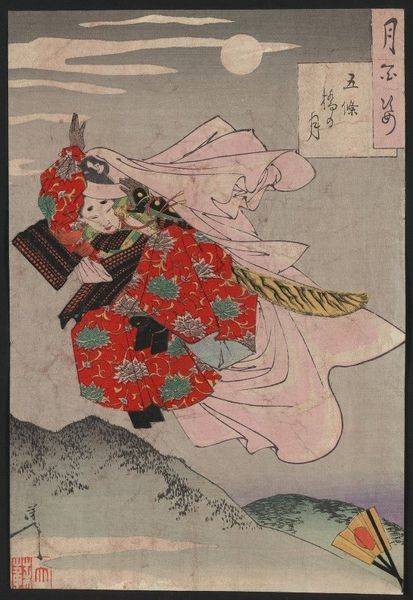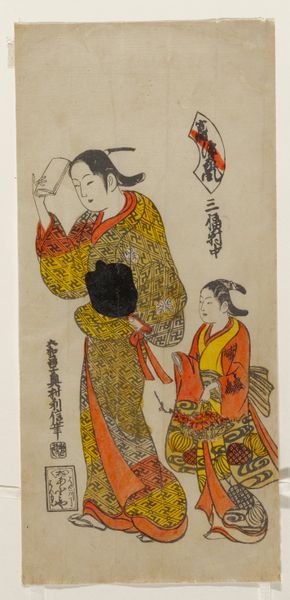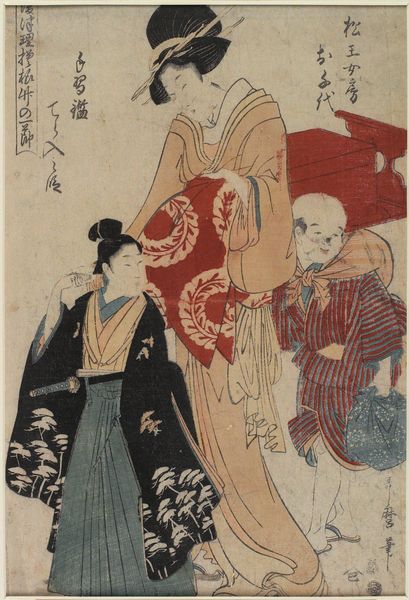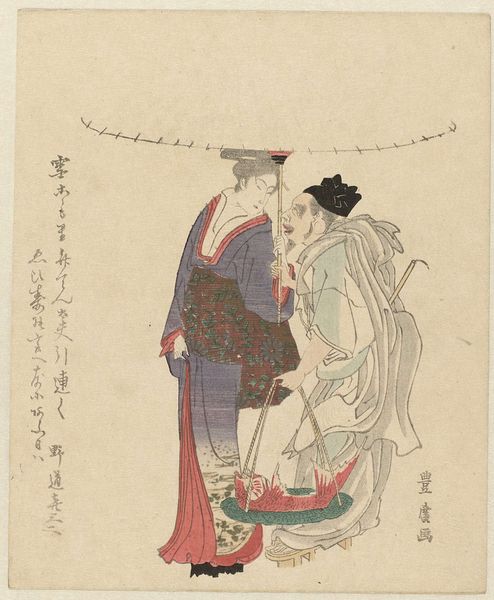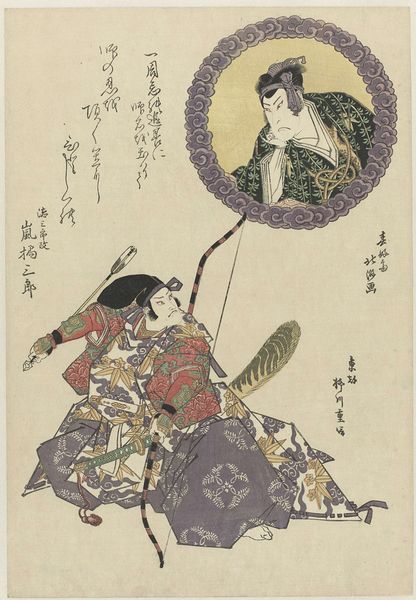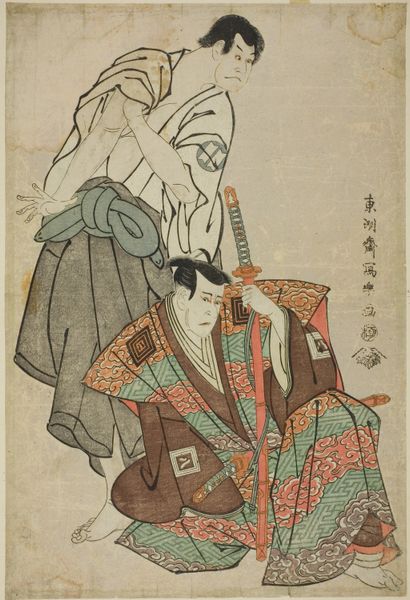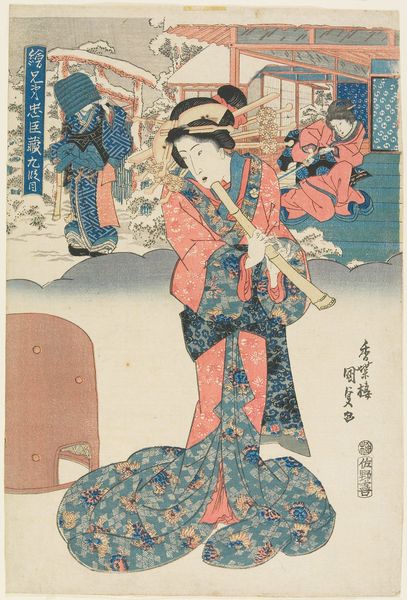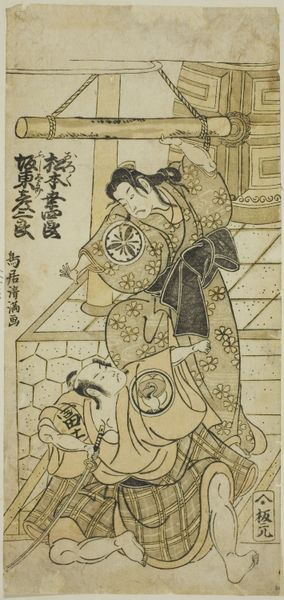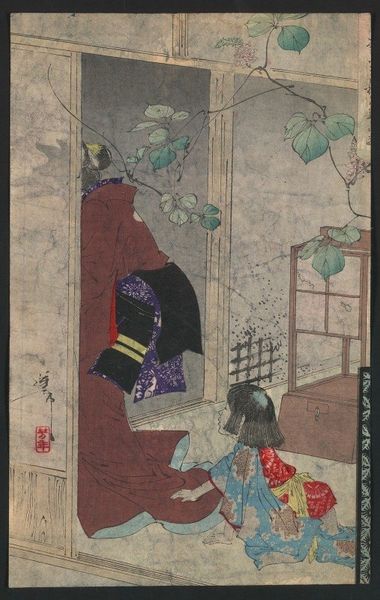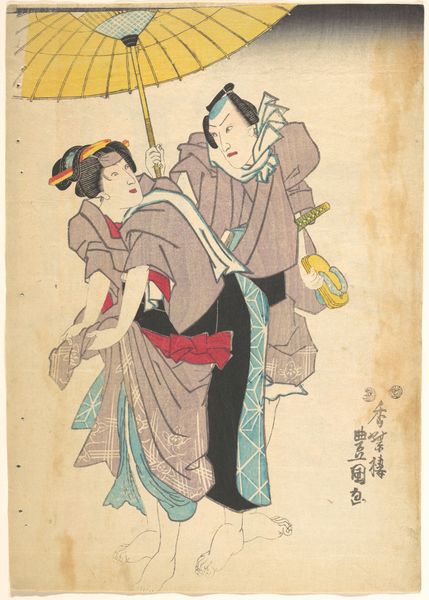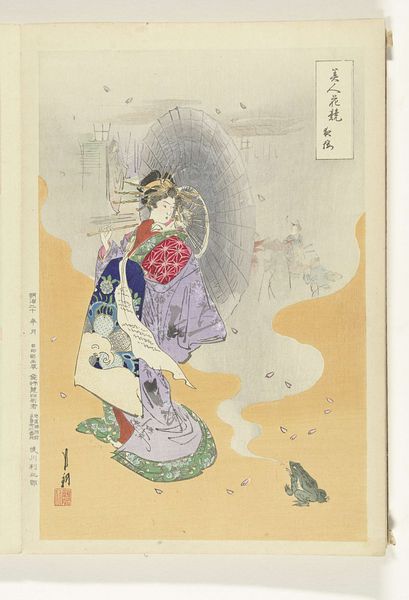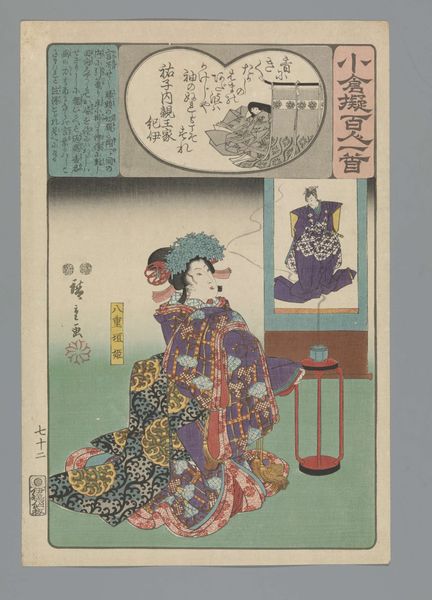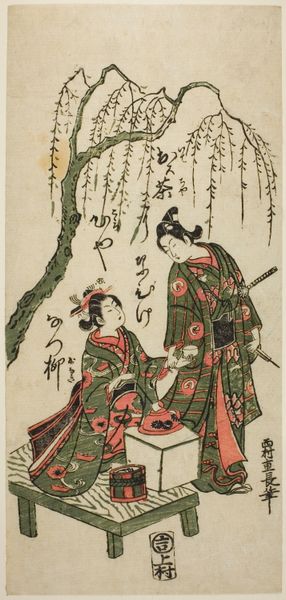
Copyright: Public Domain: Artvee
Tsukioka Yoshitoshi produced this woodblock print of Omori Hikoshichi sometime in the late 19th century. The scene depicts the historical figure Omori Hikoshichi carrying a woman across a lake under a full moon. Produced during the Meiji era, this print reflects a period of significant social and cultural upheaval in Japan. Following the end of the shogunate and the restoration of imperial rule, Japan underwent rapid modernization and Westernization. Yoshitoshi, trained in the traditional ukiyo-e style, found himself at a crossroads as Western art forms gained prominence. Prints such as this one were produced for mass consumption, responding to a growing interest in historical subjects. Yoshitoshi may have used historical texts, popular legends, and theatrical performances as reference. What’s fascinating is how these prints were often collaborative efforts, involving artists, carvers, and publishers. Further research into the economic structures supporting printmaking during the Meiji era could illuminate the dynamics between artistic expression and market demand. Ultimately, the meaning of this print is contingent on the social and institutional context in which it was created and consumed.
Comments
No comments
Be the first to comment and join the conversation on the ultimate creative platform.
